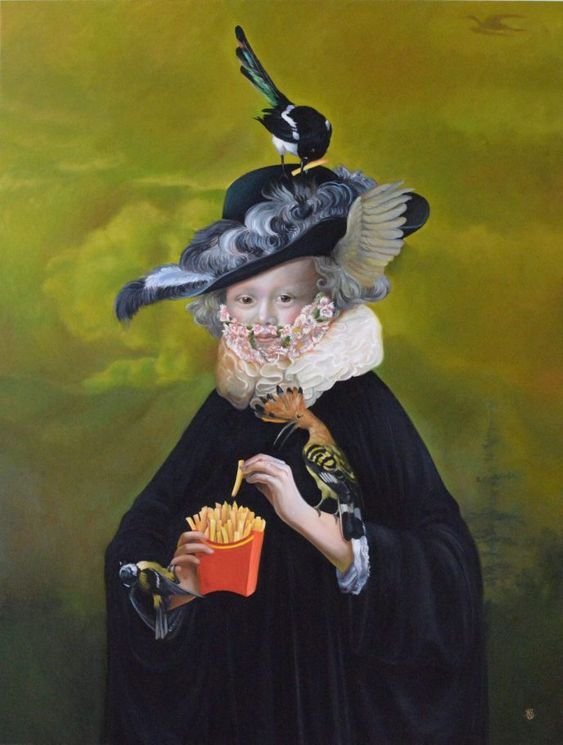ERIC: A Very New York Show Filmed in Budapest, Hungary
zita kisgergely
Hungary has become a well-established filming location for international productions wanting to get more bang for their buck. In a hyper-budget conscious period, this is particularly true for ambitious drama projects. But you might be surprised to learn that Budapest, which has stood in for a range of European cities, was used to film a significant proportion of the recent Netflix limited series set in New York City, Eric.
Eric, via www.imdb.com
Why film New York in Budapest?
Starring Benedict Cumberbatch and set in 1980s New York, the story focuses on Vincent, a prominent puppeteer, and his wife Cassie who embark on a desperate search for their missing son, Edgar.
While the series authentically captures the essence and themes of living in New York in this period (the show examines diverse themes such as AIDS and the plight of the homeless), much of the filming took place in Budapest.
Director Lucy Forbes (talking to press and the RadioTimes.com at a screening), highlighted the practical and financial reasons behind this decision. Shooting the entire series in New York would have been prohibitively expensive. In contrast, Budapest offers excellent studio space and highly skilled crews, making it a cost-effective alternative without compromising on quality.
Seamlessly blended exterior and interior settings
While the exterior shots of the series portraying 1980s New York were filmed on location in the Big Apple, the interior scenes (including Vincent and Cassie's apartment and the Good Day Sunshine studio) were meticulously constructed in Budapest's studios.
Additionally, there were some New York street sets available from the 2008 film, Hellboy that were repaired and built upon. Forbes also mentioned in her interview that, architecturally speaking, there were interiors in Budapest available that felt visually authentic to 1980s New York.
This hybrid approach ensures that the series maintains its New York ambiance while leveraging the resources and affordability of Hungary.
Let’s talk about those underground tunnels
The series features scenes of the homeless community living in New York’s underground tunnels. These gritty sequences were shot in the vast tunnel system under Budapest. Yes, they are absolutely real!
Incidentally, if you’re a fan of Magyar film, you might be reminded here tangentially of the underground tunnel system featured in Antal Nimrod’s 2003 film, Kontroll, which was also, naturally, filmed in Budapest. Check it out to further explore themes of communities (metaphorically and literally) trapped underground.
A cost-effective hub for international productions
Budapest has become a sought-after destination for various international productions, including music videos, commercials, TV shows, and films. Its rich architectural heritage, which spans Gothic, Baroque, and Art Nouveau styles, provides a stunning and versatile backdrop for any project. Whether filmmakers need to depict historical Europe, modern-day metropolises, or fantastical realms, Hungary can deliver.
As we’ve mentioned, one of the key advantages of filming in Budapest is its cost-effectiveness. The city offers competitive rates for studio rentals, equipment, and local crew services. This affordability, combined with generous tax incentives, makes Hungary an attractive option for producers looking to maximize their budgets.
But filming in Budapest is not just about locations; the city also boasts a wealth of local talent and top-notch infrastructure. Budapest is home to experienced (and in some cases, Oscar and BAFTA award-winning) production crews, set designers, and special effects teams who have worked on major international projects.
This pool of talent ensures that productions in Budapest run smoothly and meet the highest standards of the film industry.
Sources & further information:
Flatpack Films has years of experience servicing international brands, agencies, and production companies. Filming in Hungary is easy when relying on their knowledge of the market and ability to solve complex needs. They bring the best that Hungary has to offer in terms of unique locations, exceptionally skilled crews, top-of-the-line equipment and technical solutions. Backed by an impeccable track record, Flatpack Films has worked with world-class clients including Samsung, Samsonite, Toyota, Braun, Chivas Regal and many more.
Get in touch and learn more about Budapest film locations, Hungarian film incentives, film tax credits in Hungary and how Flatpack Films can bring your project to life through a highly bespoke approach.











































